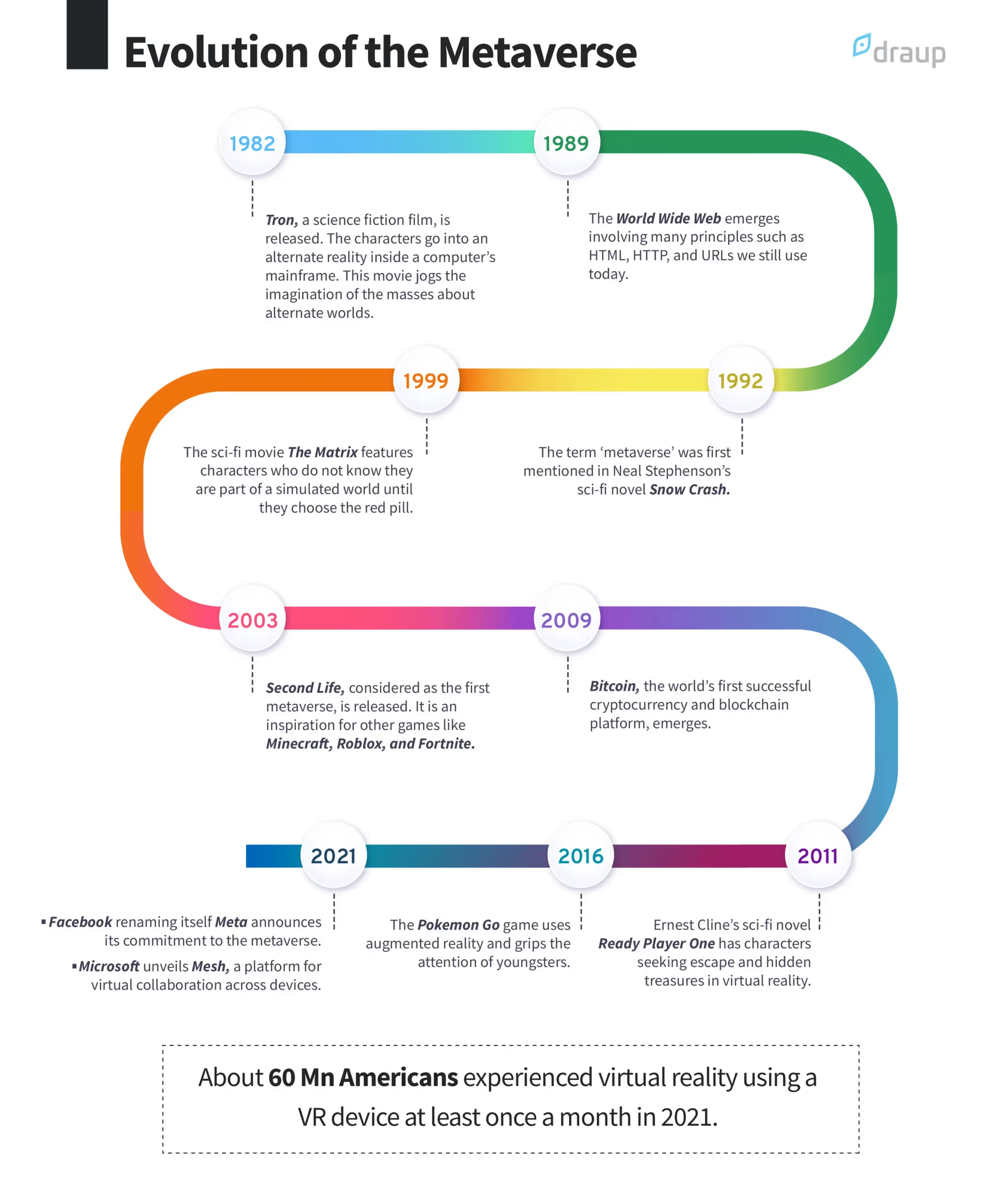How is AR Reinventing Customer Experience and Sales in the Metaverse
The metaverse market was worth USD 2.91 Bn in 2020 and is predicted to grow at 41.7% CAGR between 2022 to 2030.
Since the early 1980s, experts have been speculating about the emergence of a ‘successor’ to the internet. In 2022, this successor has come in the form of ‘metaverse.’
We are now experiencing the world through device screens. The internet is not immersive yet. In a new virtual world, you can hang out with friends and do nearly everything you do in real life, like playing games, going to events, or shopping.

The concept had many evolutions and iterations. A whole world exists parallel to the real world, but we do not yet exist in the true metaverse. There exist ways to experience some pieces of the metaverse, like virtual reality (VR) or augmented reality (AR).
How Does the Metaverse Enhance Customer Experience?
No matter the technology employed, businesses aim to enhance customer experience (CX) and facilitate multi-dimensional interactions, where users will immerse themselves in digital reality than experiencing or observing it.
As per research, 93% of consumers agree that technology is our future and 76% believe that their everyday lives and activities depend on technology. Here’s how the metaverse adds a new dimension to CX for modern brands.
1. Retail stores can exist virtually
According to experts, retail brands could heighten CX on the metaverse, one of the first sectors in the metaverse. The ‘Into the Metaverse’ report mentions that innovation in retail has already begun on Instagram.
Till now, we saw customers using AR to try on clothes virtually. Metaverse will facilitate buying of fashion items that never exist physically. For instance, Gucci is selling a virtual version of its Dionysus handbag on the Roblox, an online gaming platform for 350,000 Robux (in-game currency) or USD 4115.
2. Personalizes and engages shoppers
Personalization has been adding to the e-commerce shopping experience. In the metaverse, retail brands can connect and engage global users while pushing the boundaries of creativity with ideas that might not be possible in the real world.
A recent poll said that over 60% of millennials and Gen-Z believe brands presenting themselves online are more important than offline. Brands can offer customers with hyper-personalized experience by translating real-world products into virtual spaces without worrying about the physical world’s limitations.
Case in point, French luxury brand Balenciaga collaborated with Epic Games, of Fortnite fame, to bring its clothing and signatures into the online game for in-game purchase. Online virtual space enables fashion enthusiasts to experience and see how clothes will look on them, adding to the interest and personalization.
3. Brands learn more about customers
‘Virtual dressing’ can reveal more about their customers’ tastes and preferences, thus enabling retail players to learn more about their consumers. Additionally, they must use sales analytics to build a successful campaign to understand how users behave in a situation and how this can correlate to their product choice.
The metaverse can act as the next version of search engines to search data to market advertised products.
For example, London-based fashion brand Shrimps ran an Instagram competition that asked followers to post #StayAtHomeShimps looks where the winner would receive a brand bag of choice. Fans sketched their outfits of choice, and the brand learned about each customers’ tastes and preferences.
4. In-game sales a reality
Linden Lab launched Second Life in 2003 for people above 16 years. With more than 900,000 monthly users, the virtual world had its currency, cities, and economies. 2011 brought Minecraft, targeted towards 5 and 15. With endless gameplay, its low-tech environment did not need the latest gadgets.
Facebook’s in-platform games allow users to buy items to help their game. The metaverse offers more than the gaming experience. People can participate in social bonding and digitized entertainment in virtual-reality-based gaming.
Traditional ways of marketing to young people are gone and are using the opportunity to market in-game. The metaverse is emerging as a playground for brands to connect with users and sell virtual versions. Additionally, developers are positioning games as non-fungible tokens (NFTs).
Case in point, Tradestars blends sports knowledge with fantasy stocks and Ethereum’s cryptocurrency, convertible to real-world cash. Pokemon Go uses a location memory system and serves as a tool for users to mark important events in their lives, along with places they’ve lived or visited.
5. Revolutionizes community building and virtual events
The future of events could be in the metaverse and could present an opportunity for event managers and communications professionals. With social events becoming mainstream, the metaverse can further bridge geographical divides in the future.
For instance, the entertainment industry is adopting the metaverse. John Legend’s recent concert ‘Bigger Love’ used XR technology to broadcast his avatar to 500,000 attendees. His fans could socialize and interact with John Legend.
Brands could show their commitment and participate in these events. Moreover, imagine a T-shirt brand selling their clothes in an event in the metaverse. Once they are in the metaverse, their avatar could wear the same T-shirt in Fortnite and show off on Instagram and Facebook. Then, they could have the real version in the physical world.
With the translation of real-world products into virtual spaces, brands recognize the potency of creating ‘virtual first’ products and services and participating in virtual economies. Businesses must consider their current and future role and relate to their audience. If you want to find customers, you must go where they are.
Draup’s sales intelligence platform helps the sales team with insights about prospects to close or park deals. Its 360-degree view of accounts created using machine learning models ensures data integrity and helps address pain points.









.svg)

.svg)
.svg)
.svg)













.svg)





.svg)





.svg)
